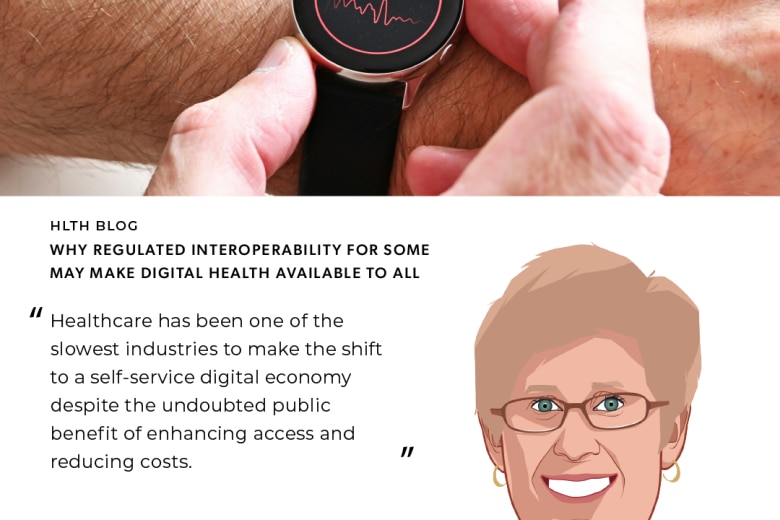At the Association of Medical Directors of Information Systems ( AMDIS) Annual Physician-Computer Connection Symposium in June, one of the speakers raised the concept of the “healthcare ATM” and the importance of portability of healthcare data. I thought this analogy was spot on.
There are many parallels between healthcare and financial data. The first commonality is that security is paramount in both industries. There are explicit and stringent policies that regulate who can access and share data, and breaches have serious consequences and legal implications.
Secondly, both industries have shifted their business models to be more consumer-focused. In a competitive market, both sectors have restructured how services are organized and delivered. Banks and financial advisors are packaging daily transactional banking services with long-term retirement and financial planning services to create a one-stop shopping experience. Healthcare is taking this same approach by creating new service lines, coordinating care across the continuum, and focusing on the patient experience.
In keeping with this consumer-focused approach, both industries now offer many (but not all) services in a virtual environment. For routine transactions, consumers can bypass a phone queue and check their data and make requests online. In finance, one can easily check an account balance, transfer funds, schedule payments, request documents, and sell stocks through a smartphone application. Albeit in varying stages of maturity and adoption, healthcare is starting to offer similar services through patient portals. A patient now can access medical records, pay hospital bills, request prescriptions and appointments, and manage the health data of another person through proxy.
For both banks and hospitals, you only go to the brick-and-mortar establishment when it is absolutely necessary. When was the last time you spoke to a teller at a bank?
From a transaction standpoint, these two paradigms are similar, but yet the adoption of financial portals is light years ahead of patient portals. One could argue this is because patient data doesn’t impact a person’s day-to-day activities. My position is that adoption of a portal, or any technology actually, is directly linked to the value of the interaction with the data and platform.
To remedy poor adoption, patient portals need to learn from their kin in the financial sector and expand services. For example, patient portals should alert me when new data and labs are deposited in my record. Patient portals should allow me to withdraw any information that is incorrect. Patient portals also should partner up with nutrition portals, wearable device portals, and exercise portals, for example, to create an ecosystem that delivers valuable information.
Imagine using a wearable device app that tracks your weight and exercise and a nutrition app that monitors your calories and fat intake. All this data is aggregated and delivered to you via your patient portal, which then feeds the data into a health calculator to assess whether you are meeting your care plan goals for weight loss. This then sends an alert to your smartphone to tell you whether you are on track.
A patient portal is a fundamental element of a patient engagement strategy. However, in order for it to live up to the expectations, there must be a mastery of its potential and a disruptive innovation of functionalities. Unlike its ATM counterpart, a patient portal cannot be viewed only as a transaction vehicle, but more of a virtual health coach. This would accelerate the adoption of patient portals and advance the field of healthcare in general.




































